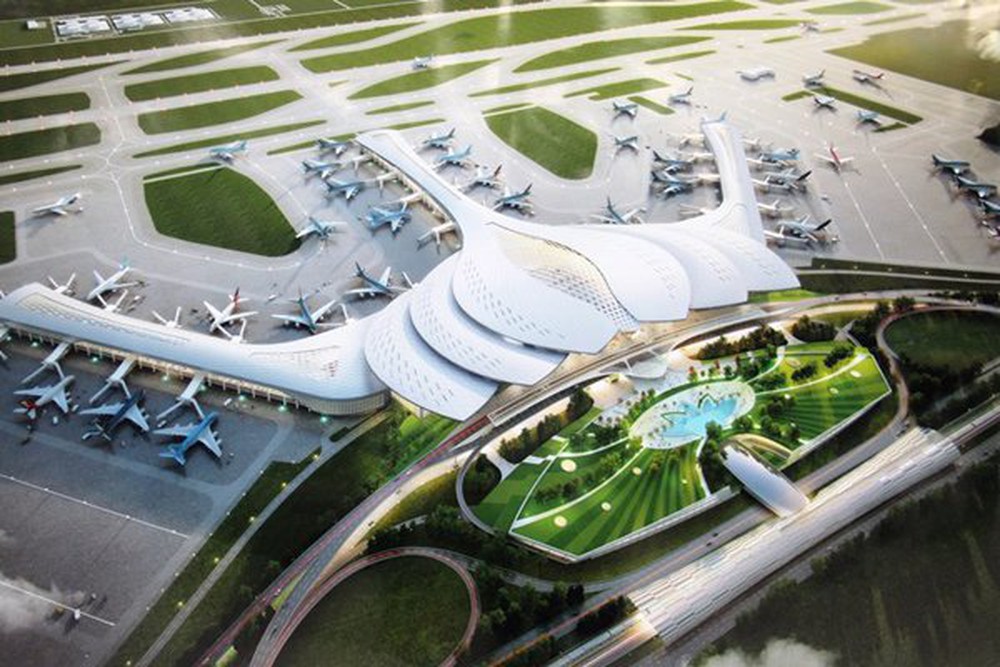
An artist’s impression of the passenger terminal of the Long Thanh International Airport project in the southern province of Dong Nai. (Photo: TL)
The Ministry of Transport said in its proposal that major airports, such as Singapore’s Changi, Thailand’s Suvarnabhumi, Malaysia’s Kuala Lumpur, South Korea’s Incheon, Hong Kong’s Chek Lap Kok, France’s Charles de Gaulle and Germany’s Frankfurt, have all adopted a similar investment model with a single investor in charge of the investment, management and operations of the airport.
The investors in those projects have developed and operated many essential facilities, such as the runway and passenger terminal, as well as utilities such as water supply and communications tools.
They have also worked with other investors to build and run the cargo terminal and offer meals for passengers and plane maintenance services.
These airports are State-owned enterprises (SOEs) or joint stock companies that either have the involvement of SOEs or have controlling stakes owned by the State.
After making an investment, the State can divest certain amounts of public capital from these companies, the ministry added.
Having taken international experience and Vietnam’s practical situation into account, consultants and ACV drew up three investment plans.
The first plan is to make an investment in line with the project’s prefeasibility study, where the chosen investor and operator for the project will receive official development assistance (ODA) loans.
Meanwhile, the ACV will be tasked with overseeing the investment and operations of the airport without taking out ODA loans. Instead, the ACV will either finance the project with its own funds or set up a new enterprise in which it holds the majority stake.
Otherwise, the Government will put the project up for auction to select the investor and operator. The chosen firm will tap its own finances to complete the project under a public-private partnership with a build-operate-transfer contract.
The ministry said consultants and ACV have weighed the pros and cons of the three plans, based on six criteria: the legal framework; the role and benefits of the State; the execution progress of the project; investment capacity and experiences; investors’ operations; and the level of capital attraction from the private sector.
They voted in favor of ACV as the project’s investor and operator, who will work on the project by tapping its own funds.
Do Tat Binh, deputy general director of ACV, told the Government news website that ACV runs a total of 21 airports across the country and is a joint stock company in which the State holds a 95.4% stake. Meanwhile, Long Thanh is poised to become the country’s largest airport, so the investment and management by the corporation over the project will create links with other airports.
Binh added that ACV has a professional workforce to handle airport management and operations and has pledged to arrange for financing from its own capital. The corporation has so far accumulated some US$1 billion, and the figure is expected to reach US$1.5 billion before the project begins.
ACV will only take out small loans and will coordinate with its partners to develop airport facilities. “We could invest in the runway, roads to and from the airport and terminals to ensure the uniformity of the airport and meet progress goals,” he remarked.
The assignment of ACV as the investor is an optimal plan since the domestic enterprise will not be reliant on foreign firms in terms of technology and progress, according to Pham Van Toi, General Secretary of the Vietnam Association on Aviation Science and Technology.
Commenting on other plans, he noted that preparations for investment and auction could last several more years. If so, the country would not be able to keep up with the presently booming demand for air travel.
The Long Thanh International Airport is designed to handle up to 100 million passengers and five million tons of cargo per year once the three construction phases are complete.
Following the first phase, slated for completion by 2025, the airport will have one runway and one passenger terminal able to accommodate 25 million passengers and 1.2 million tons of cargo per year.
The second runway and terminal will be built during the second phase to raise the airport’s annual capacity to 50 million passengers and 1.5 million tons of cargo.
The project costs an estimated VND336.6 trillion, or US$16.03 billion, with VND114.5 trillion assigned for the first phase, based on the 2014 exchange rate between the Vietnamese dong and the U.S. dollar.

















